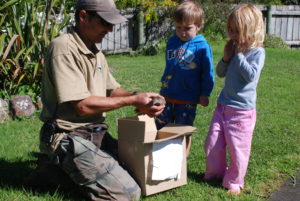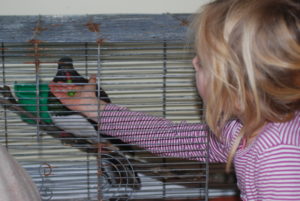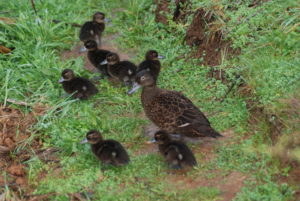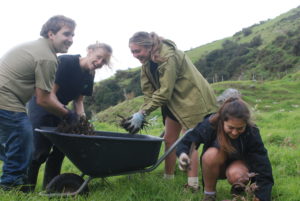Imagine this: you’re the new manager of Glenfern, a 260-hectare sanctuary on Great Barrier Island in Auckland. There are over 1,000 tunnels and bait stations to monitor, both inside and bordering the sanctuary. Would you head out for several hours at a time, clutching a waterproof notebook, and then return to manually enter any captures into a dull old Excel spreadsheet? Or would you try something different?
Glenfern co-manager Scott Sambell, a long-time conservationist, happens to have a passion for data-capture technology – and for putting his time to good use. Four years ago he implemented an ArcGIS platform to map the traps and surrounding areas and recently integrated a new system called Trapminder, which uses remote sensors to automatically capture and send real-time information on the area’s many traps, gates and fences.
Trapminder’s inventor, Gian Badraun, won WWF’s Conservation Innovation Award in 2014.
Trapminder was set up and customised with help from NZ GIS in Conservation (GiC), which supports conservation groups using the mapping technology.
Thanks to their input Scott has been testing 20 sensors and their range capabilities, with much success.
Not only does he learn which traps or barriers need immediate attention, he also analyses the data to learn more about the behaviour of predators and which tools are most effective for managing them.

“It was born out of frustration,” Scott explains of his GIS (Geographic Information System) adoption. “I couldn’t believe that no one else [I knew] was using it. Other people have similar ideas, but many of us are geographically isolated in beautiful, remote areas. We need to make sure we’re keeping in contact and sharing the lessons we’ve learned.”
Predator control on Great Barrier Island kicked off over a quarter of a century ago thanks to world champion yachtsman, businessman and conservationist Tony Bouzaid, who purchased a block of land in Port Fitzroy in the early 1990s.

After noticing a distinct lack of bird life and rats running riot, he put out some traps. Then he put out some more. And some more. Then he encouraged his neighbours to do the same. Soon there were traps right across the peninsula.
When Bouzaid passed away in 2011, Scott and his wife Emma, who has a PHD in Ecology, took over the management of the sanctuary and started “filling in the gaps” with more traps, fencing to keep out the rabbits, and new technology.
“These days we monitor everything… I’m pretty confident that a rat couldn’t turn left or right without running into something.”
The primary pests on the island are rats (ship and kiore) and feral cats. But with rat numbers much lower these days thanks to strict trapping and monitoring, there aren’t many catches happening – which is a good thing, but it explains why it’s so important to receive alerts rather than manually and repetitively check all the traps.
The sanctuary protects dozens of rare native species, including the black petrel, Cook’s petrel, chevron skink, brown teal, kaka, robins and bellbirds.
Two brown teal breeding pairs on the Glenfern property are closely monitored. Baby birds are banded – and their babies, and their babies.
Every single fledgling is recorded, says Scott, and there’s been a “good amount” of eggs-to-fledglings.
Glenfern employs a full time biosecurity guard and several local subcontractors, who do everything from clearing traps to mowing the lawns.

Volunteers are sometimes recruited over the summer, but become expensive once transport and food are factored in. They do offer internships – and the interns tend to fall in love with the island and stick around for the long-haul. School groups also come across via ferry for tree planting through Hillary Outdoors, and Scott credits several thousand young trees to hard-working kids.

Trapminder is still in the prototype phase (its development is being funded by an AMP scholarship), but the plan is to implement it across Great Barrier Island and, eventually, nationwide.
“I want to put in systems that are affordable and work,” says Scott. “It’s all very well having the technology, but it needs to work further down the road. If I create a [monitoring] node for $200 I think, ‘Can I do this for $40?’ It needs to save money in the long run.”
For more information, visit the Glenfern Sanctuary website and see the Trapminder field trials in action.

